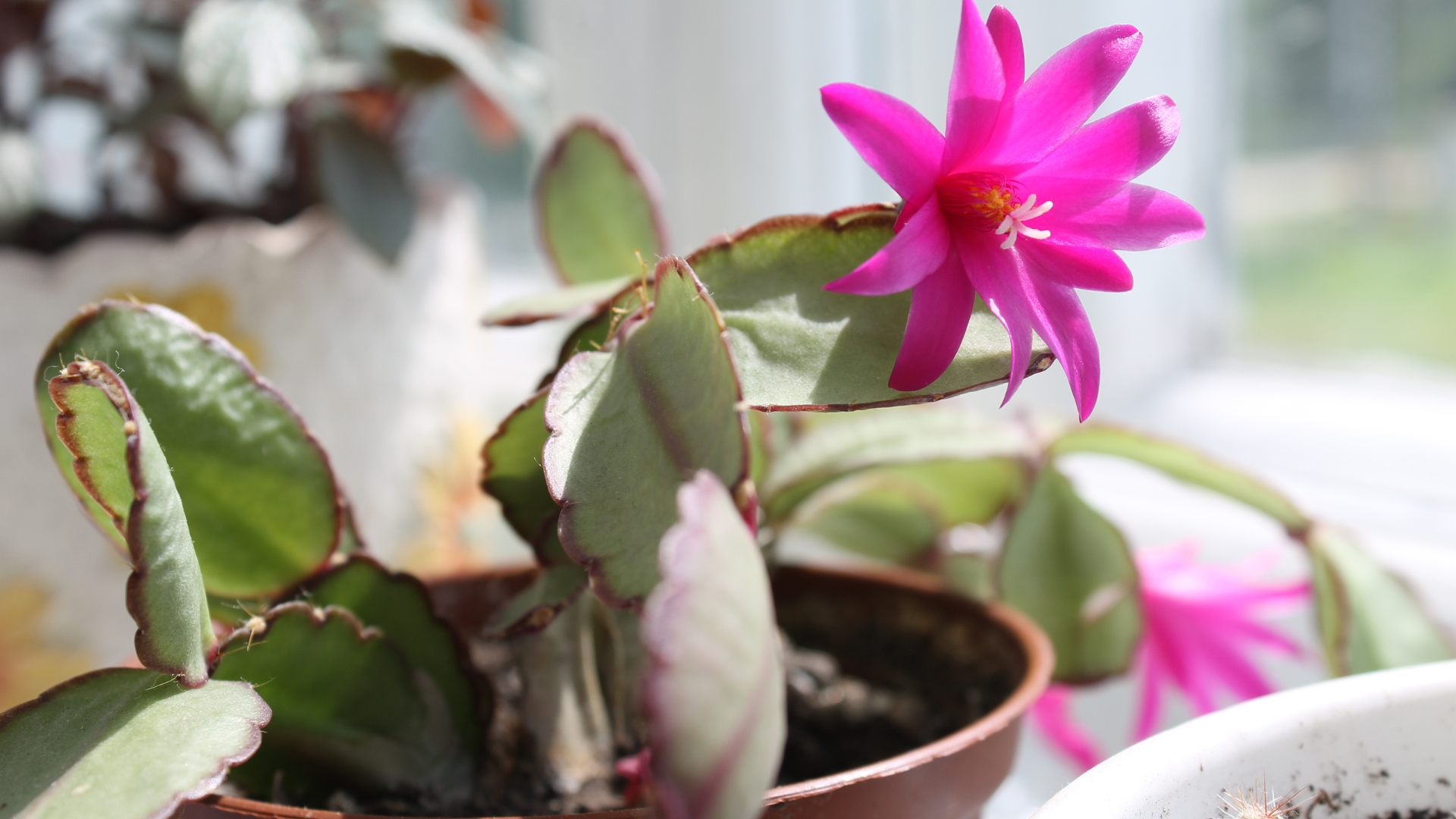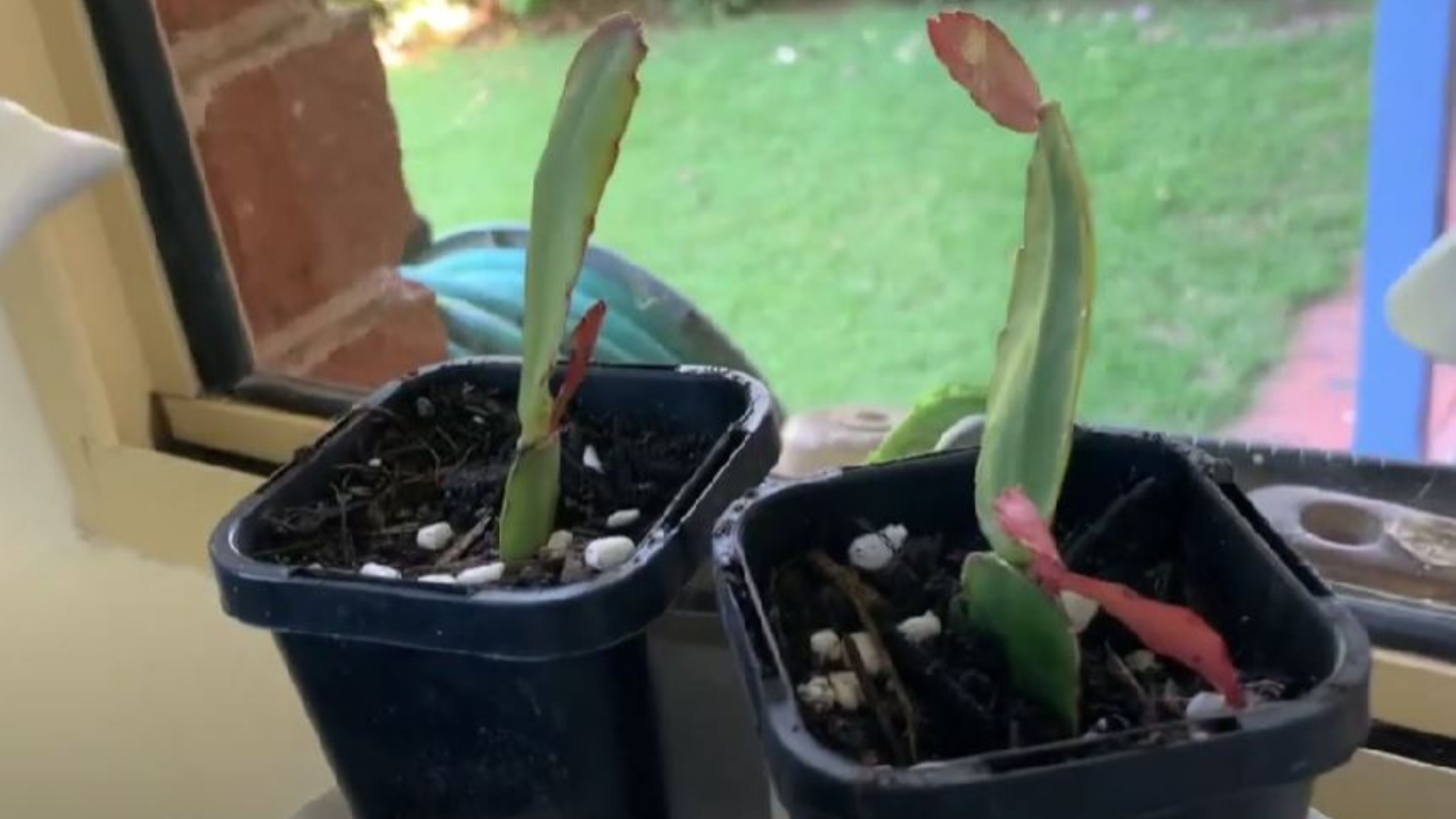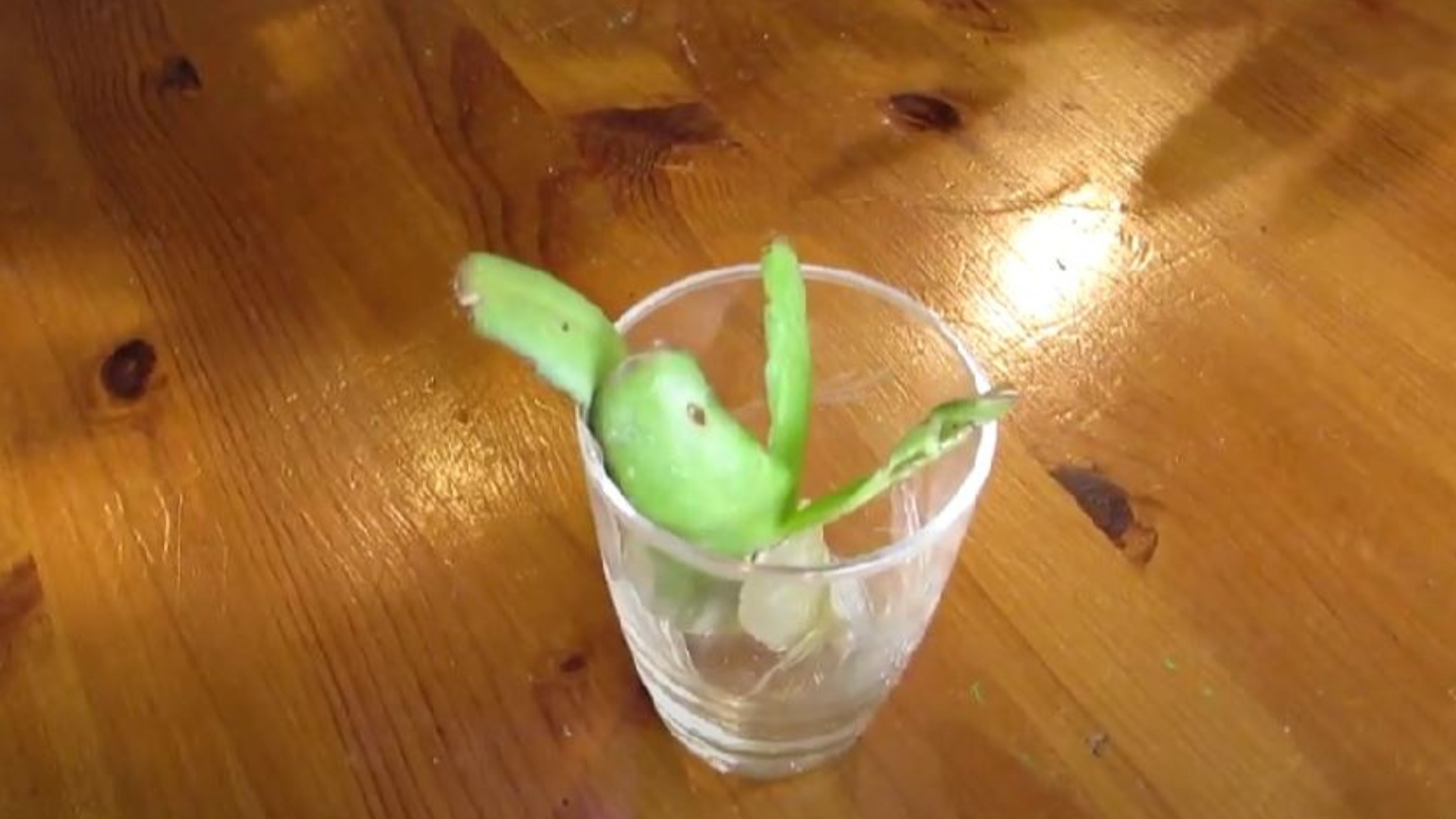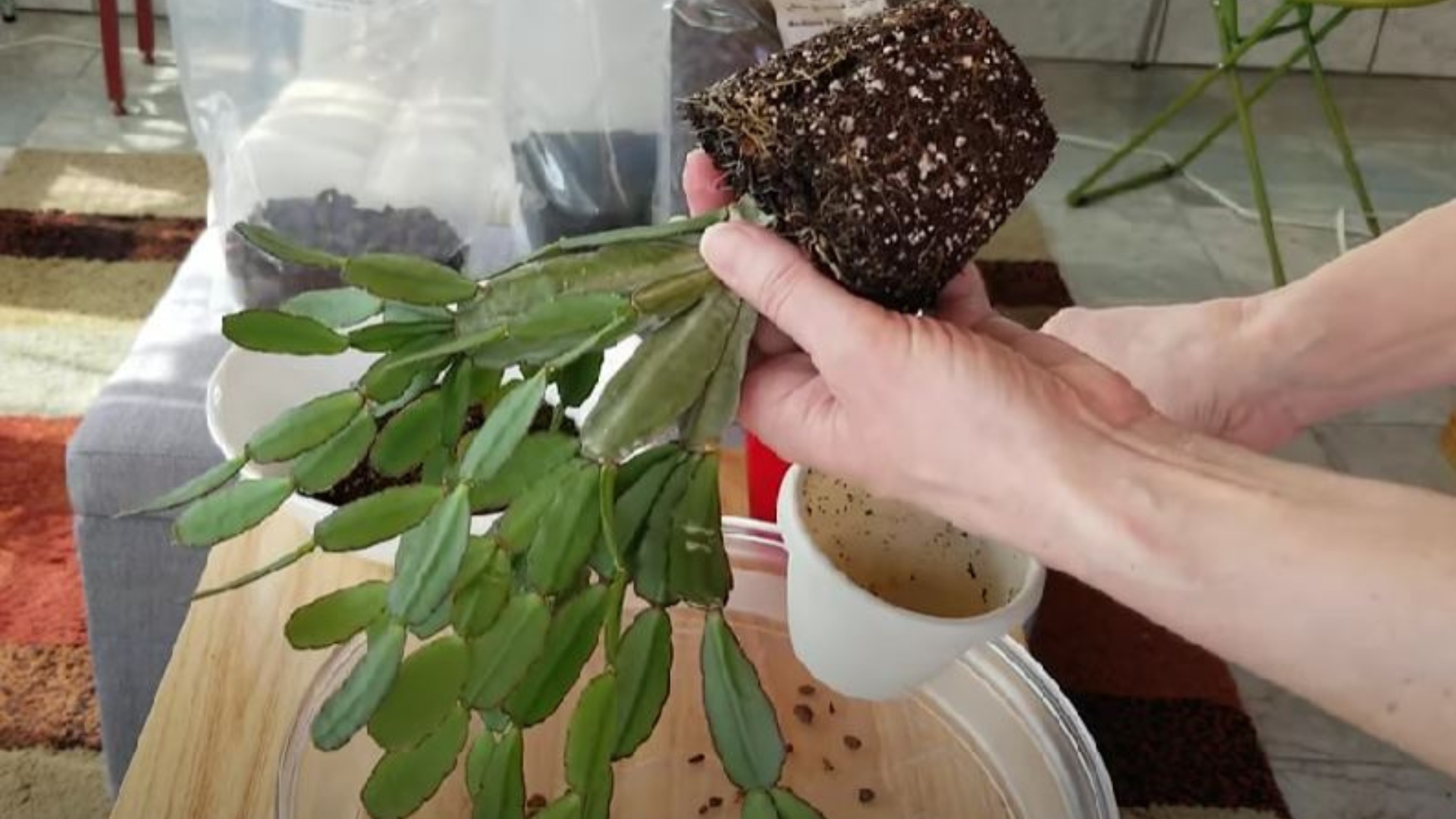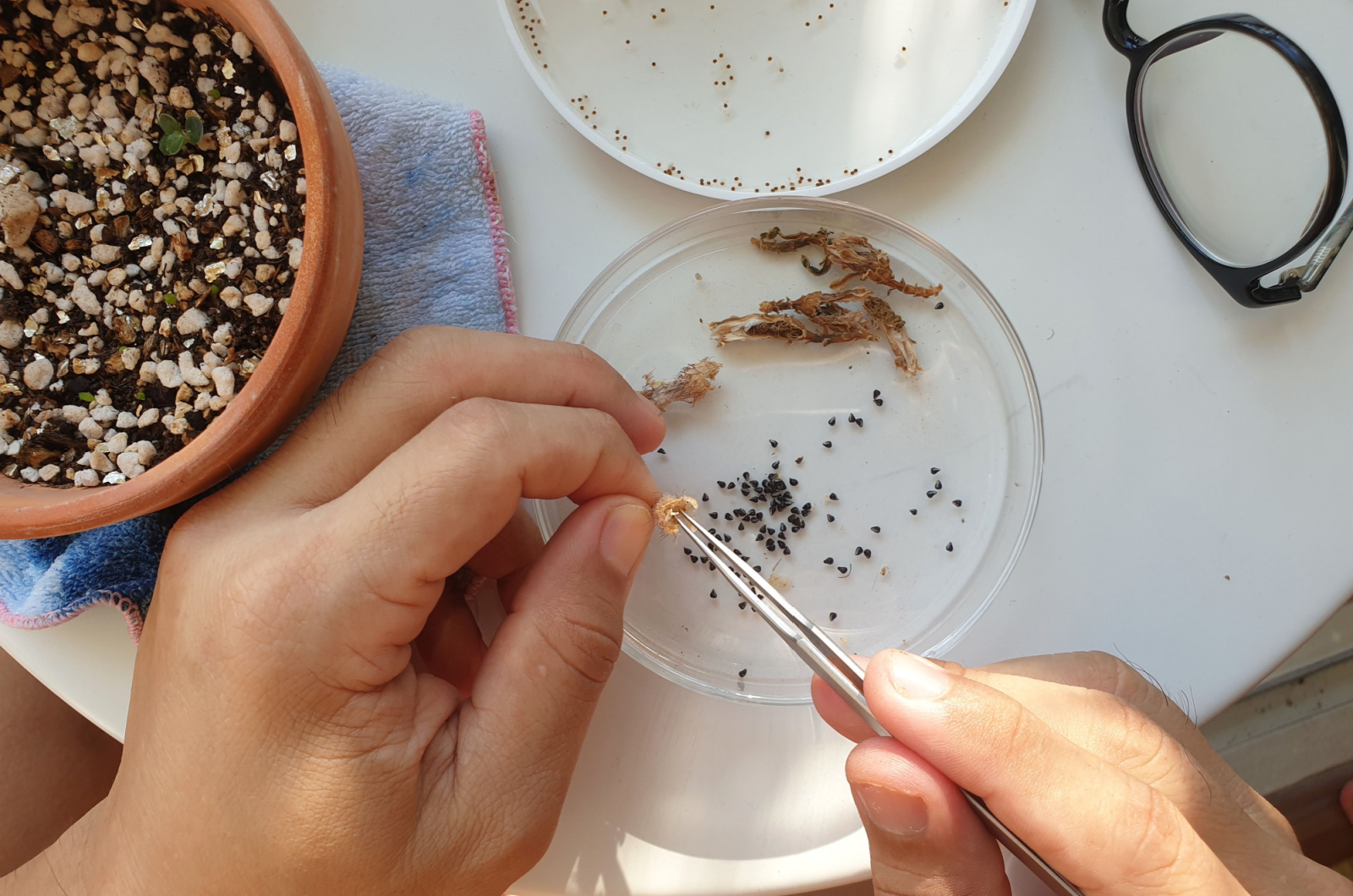Everyone is crazy about holiday cactuses and, since Easter is arriving, the Easter cactus steals the show.
This species generates lovely star-shaped blooms, making it an absolute must-have for a picture-perfect celebration.
If you want more of these wonderful plants in your collection, you’re in the right place.
In this article, I’ll show you how to propagate Easter cactus in 4 different ways.
Let’s get started!
1. Soil Propagation
One of the most common ways of propagating Easter cactuses aka Rhipsalidopsis gaertneri, is through cuttings. This is a straightforward propagation method and the best time to do it is approximately 2-3 months after flowering.
First, prepare a few smaller pots, depending on how many Easter cuttings you want to take, suitable potting mix, a mister, and a plastic bag.
Here are the steps.
1. Select a cutting with about 3 segments and carefully twist it off the plant, making sure not to break its base. If the bottom part is damaged, your cutting won’t produce new growth.
2. Leave your Rhipsalidopsis cactus cutting for 2-3 days to dry well and form a callus. This technique prevents rotting and increases the chances of rooting.
3. Fill your pots with a quick-draining growing substrate and insert your Easter cactus cuttings, making sure at least half of the cutting is below the soil surface.
4. Lightly mist the leaves and cover your holiday cactus cuttings with a plastic bag to maintain moisture.
5. Keep your Rhipsalidopsis cuttings in bright indirect light.
6. Avoid irrigating until the new roots occur, and repot your Easter cactus cuttings after the roots are a few inches long.
7. Once you transplant the cuttings, resume with the usual Easter cactus watering regime.
2. Water Propagation
Many growers propagate their plants in water because it’s easy and you can see the entire process.
For this method, all you need to prepare are a few glasses or jars and clean and fresh water.
Here are the steps.
1. Take the Easter cactus cuttings by gently twisting them off the plant.
2. Fill your glasses or jars with clean and fresh water and put the cuttings in, making sure the bottom part is below the water line.
3. Keep your Easter cactus cuttings in bright indirect light and change the water every couple of days to prevent pathogens from settling in the standing water.
4. Once you notice the roots are a few inches long, plant your Easter cactus cuttings in a suitable growing substrate.
3. Division
If your Easter cactus is large, you can divide it and get a new and full plant quickly.
Here are the steps.
1. Carefully take your Easter cactus out of its pot and loosen the soil a little bit to expose the root system.
2. Divide the root ball into as many parts as you want, making sure each section has enough roots and stems.
3. If your Easter cactus is rootbound, make a clean cut to separate the root ball.
4. Plant each section separately in a container filled with a free-draining growing substrate and keep them in bright indirect light.
5. Ensure all the growing conditions for your Easter cactus that you did with the mother plant.
4. Propagating Easter Cactus Through Seeds
The methods I’ve shown you above are all easy and perfect for beginner growers. Now, I have something for all of you who love challenges and are experienced in propagating.
You can propagate your Rhipsalidopsis through the seeds but this is uncommon because the process is pretty complicated.
Your first task is to pollinate your Easter cactus and harvest the seeds. Once you have the seeds, here are the steps for starting them.
1. Moisten a paper towel and put your Rhipsalidopsis seeds on it.
2. Lay the towel over an enriched growing substrate, cover it with a plastic bag, and remove the cover every day for about an hour to let the air in.
3. Ensure bright indirect light and wait for approximately 3 weeks until the Easter cactus seeds germinate.
4. Plant Easter cactus seedlings in containers filled with a suitable potting mix.
Differentiating between Easter cactus, Christmas cactus, and Thanksgiving cactus can be hard, but propagating them is a piece of cake. Just use our guidelines and you’ll get a new Easter cactus for free!

